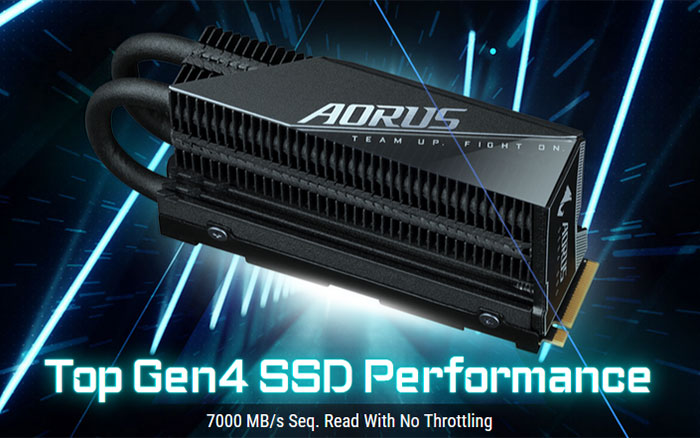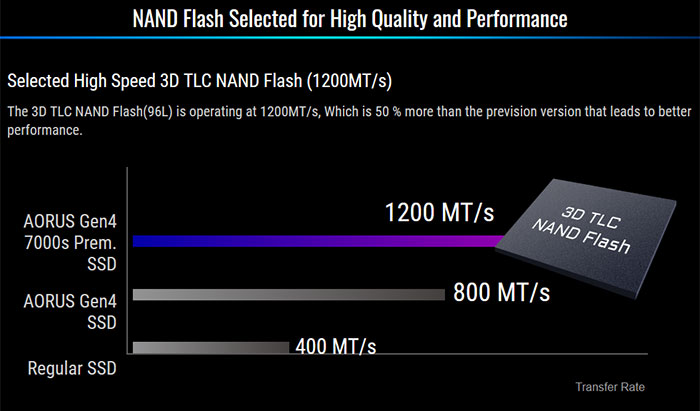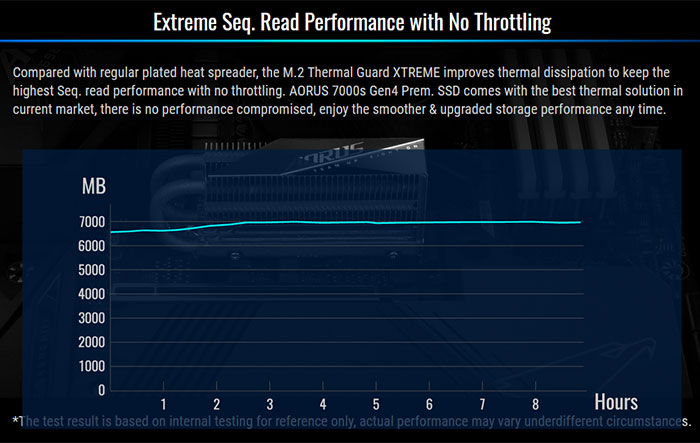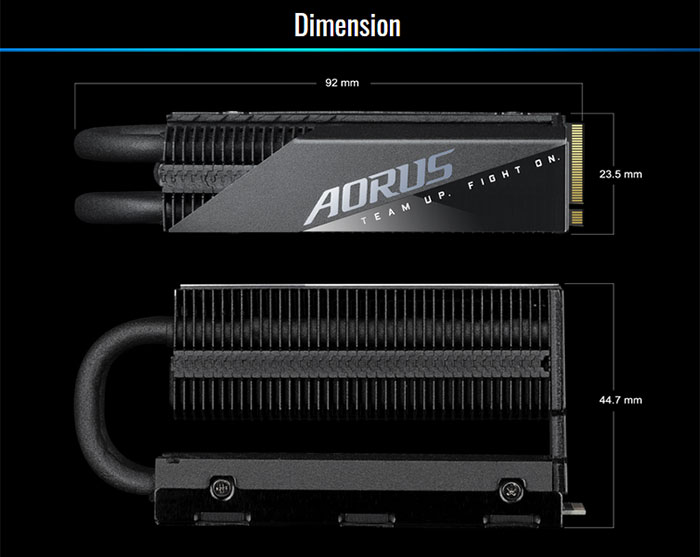Gigabyte has unveiled its latest, and fastest, Aorus branded 2TB SSD. The new Aorus Gen4 7000s Premium SSD delivers up to 7GB/s sequential read speeds "with no throttling". These Aorus drives have been updated since the CES 2021 product announcements from the Phison E16 to Phison E18 controller, instrumental in boosting peak transfers from 5 to 7GB/s. The sustained no throttling promise comes thanks to the beefiest passive cooler unit yet for Aorus SSDs, the M.2 Thermal Guard Xtreme with Nanocarbon Coating.

The key tech and performance specs of the Aorus Gen4 7000s Premium SSD are as follows:
- Interface: PCI-Express 4.0 x4, NVMe 1.4
- Form Factor: M.2 2280
- Total Capacity: 2000GB
- NAND: 3D TLC NAND Flash (96-layer)
- External DDR Cache: DDR4 2GB
- Sequential Write speed: Up to 6850MB/s
- Random Read IOPS: up to 650k
- Random Write IOPS: up to 700k
- Mean time between failure (MTBF): 1.6 million hours
- Warranty: Limited to 5-years or 1400TBW
- Power Consumption (Active): Average: Read : 7.6W, Write : 8.4W
- Power Consumption (Idle): <30mW
- Dimensions: 92 x 23.5 x 44.7mm
- Temperature (Operating): 0°C to 70°C

Digging deeper, the new SSD uses the Phison E18 controller which is an 8-channel device, supporting up to 176-layer NAND, with DDR4 caching, which is claimed to "show a 35 per cent performance increase over previous models at low queue depth improving user experience in system responsiveness". This controller is built on the efficient TSMC 12nm process node with proprietary CoXProcessor 2.0 technology and Phison says several partners are going to announce enhanced products based on it at Computex 2021 starting next week.

Circling back to the Aorus Gen4 7000s Premium SSD and, other than being one of the first to utilize the new controller, its key attraction is that 'promise' that it will never throttle. For this appealing quality Aorus is relying on the M.2 Thermal Guard Xtreme with Nanocarbon Coating. In the pictures you can see this sizable cooling solution that measures nearly 45mm tall – so you better check the clearance above your M.2 slot(s) before you buy this.

The passive cooler a nanocarbon coated finned construction laced with twin heatpipes and including an aluminium base plate and dual side high thermal conductivity pads. In internal testing this cooler shrunk the temperature delta between idle and under sustained load by 50 per cent (compared to no heatsink). You will still want decent in-case airflow to use this SSD at its full potential.

Gigabyte says that the Aorus Gen4 7000s Premium SSD is "already in the market," so you should see it for sale soon. How much more it will cost compared to the non-Premium version remains to be seen.













